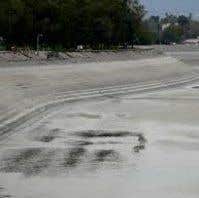Published in English on 10 November 2012
基于诸多不利因素(北美西岸除外),2012年份将在历史篇章中写下独特的一笔。半个世纪以来全球将第一次经历葡萄酒短缺而不是过剩。
整个欧洲的生长季节是不堪回首。一月末和二月初,酒农们在园中忙于春分前的枝芽修剪,温度骤降,冷到近乎将葡萄藤摧残至死。这种现象在地中海气候中实属罕见。
春天一闪而过,未留下充沛的雨水补充地下水位。接下来,祸不单行,最关键的六月花期里天气也极其飘乎不定,导致果实瘦小不均,葡萄串的数量也相当减少。
目前注重质量的酒庄在葡萄园中投入大量精力,包括摘除过剩的葡萄串,以保证最后收成里,提取物具有更佳的密集度。你可能会觉得这听上去不赖啊。但问题是落实不均导致同一串葡萄尺寸有大小,成熟有早晚,何时采收成了个大难题。
这还远不是最棘手的麻烦。花期之后是一个漫长的多雾季节,相当容易导致葡萄藤感染两种霉菌。农用化学品商人今年生意亨通,因为葡萄藤需要密切呵护,及不断的农药喷洒。那些希望在六月底拜访勃艮地酒农的人们发现他们的预约都被取消了,因为庄主们正疯了般忙于控制霉菌的蔓延。6月30日乒乓球大小的冰雹从天而降,毁掉了Volnay地区不少葡萄园。2012年确实是个昂贵而艰难的年份。
七月里,人们焦灼地期待着些许温暖干燥的天气和睛朗的阳光,但事与愿违,明显不足。一些葡萄串的叶子都被摘去,以强化有限阳光带来的成熟度。八月气温转暖,但与往常相比仍相去甚远;直到九月中旬,红葡萄要达到充分的成熟度,看起来还早得很,而这时候通常酒农应该已在酒窖里而不是葡萄园里辛苦劳作。整个欧洲南部的主要问题是干旱,当然这是每年减产的通病。植株吞噬着零星的水分,只为存活,不敢奢望成熟。因此葡萄内最重要的酚类物质短缺,影响口味。英格兰那些被过分吹嘘的葡萄园里,酸度过高,令人堪忧,而糖分则低于酿酒的法定要求。
最终,大多数的葡萄还是被采收下来,尽管比起往常晚了许多。唯一例外的是那些让人期待(可能落空)用于酿造高品质甜酒的葡萄。一些酒庄已经宣称完全跳过这个年份,不进行葡萄酒的酿造。由财大气粗的荷兰人Eric Heerema出资的酒庄Nyetimber,已宣布不生产Nyetimber 2012,让欣欣向荣的英国葡萄酒行业颇为惊愕。梅多克中级酒庄Hourtin-Ducasse的庄主也作出了相同的决定,并表示猖獗的霉菌是罪魁祸首。
欧洲大陆的整体收成大幅下降,OIV(全球葡萄酒业组织)的主席上周宣布2012年的全球葡萄酒产量将会回落至1975年以来的最低点。雨水不足是其中主要原因,导致了今年欧洲国家葡萄汁和葡萄酒量比减产的2011年还少。而全球葡萄酒消费量在几十年的萎缩后恰恰开始回升。
再加上欧盟缩减普通葡萄园的政策生效,葡萄酒的供应短缺将会在低端混配酒里表现最明显。不过小收成可能会成为价格普遍上涨的藉口。基于2011年市场需求降温,2012年波尔多期酒的定价将会变成更加精细的艺术。
Americans can brace themselves for a return to robust pricing of California wine. The glut there is well and truly over and all West Coast vignerons, in Oregon and Washington as well as in the dominant wine state California, report the best quality harvest they can remember, with decent quantity too. But this is truly a global exception.
In the southern hemisphere where grapes were picked more than six months ago there is also a shortage of volume. Crop levels were down 22% for the biggest southern hemisphere producer Argentina thanks to frost, and rain at flowering time. Chile, which has been planting vineyards faster than any other country on earth, saw the results of this in an increase in wine production in 2012, but not by enough to compensate for Argentina’s shortfall. And an exceptionally hot, very dry summer caused many berries to shrivel and may result in wines that will be difficult to marry with the nation’s aim of making increasingly subtle, appetising wines (a phenomenon that is currently observable in just about every wine producing country).
The South Africans, for example, are thrilled with their 2012s because not only was the crop 7% higher than the previous year, and almost a record in terms of volume, but grapes reached full and generally rather glorious phenolic ripeness quite early, without having to wait for very high sugars that would have resulted in high alcohol levels.
Some Australians, on the other hand, suffered their own annus horribilis with rain blighting wine production throughout New South Wales although quality was good in the much more important wine state of South Australia. Australia and New Zealand have both had their own glut of wine in recent years but the 2012 crop seems to have brought supply and demand, as in the rest of the world, into much improved balance.

